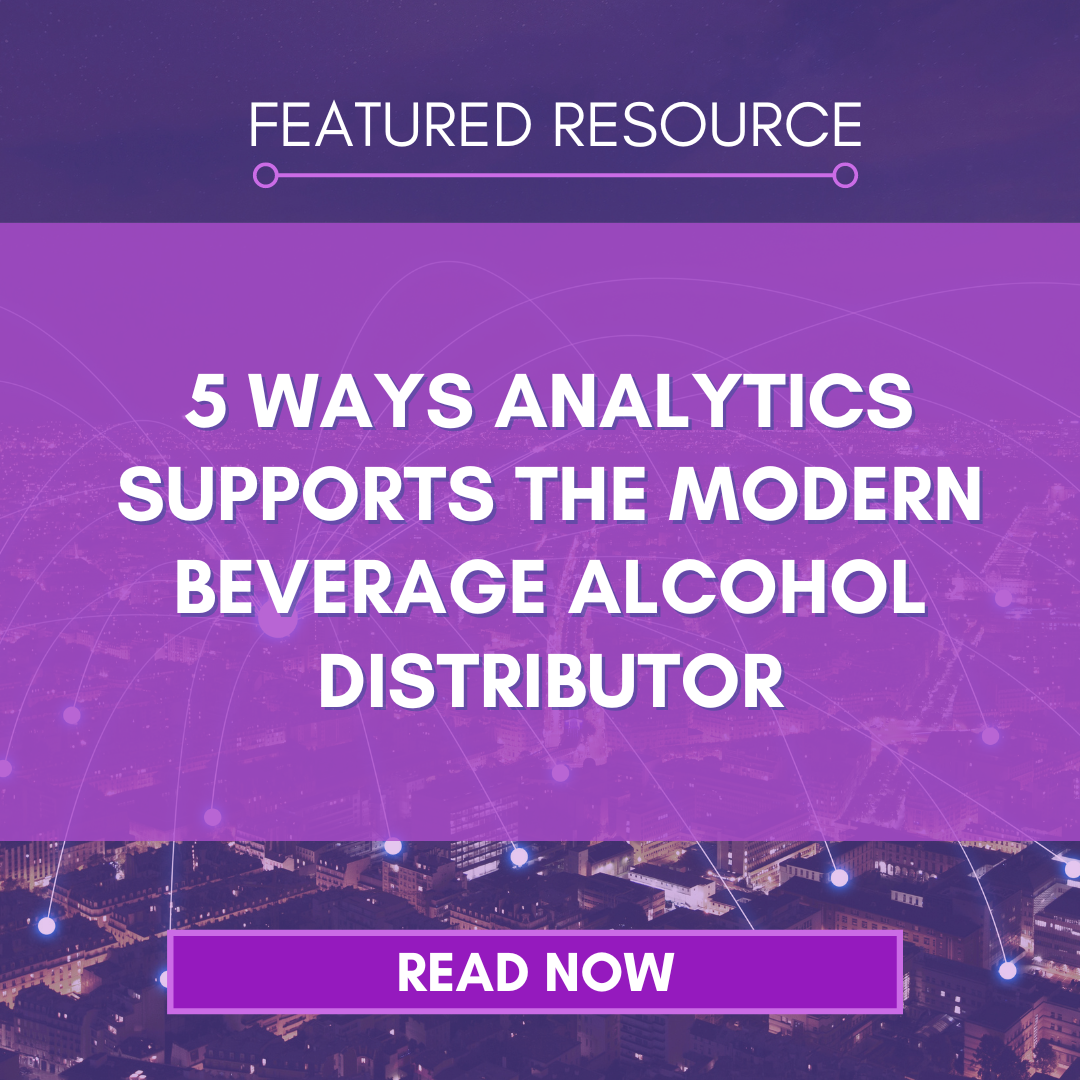The past few years have been particularly volatile for the beverage alcohol industry, with many companies forced to abruptly change their business strategies to reflect the new status quo. Increased pressure from shifts in consumer behavior, along with the expansion of e-commerce and the emergence of major disruptions such as the COVID-19 pandemic, have all put serious strain on the traditional three-tier system.
In an effort to shift their strategies from reactive to proactive and meet the demands of the modern age, beverage alcohol distributors are seeking tools that allow for more-informed decision-making and in a timelier fashion. Subsequently, more than ever before, they are investing in the power of their data and are using analytics platforms to help bring together their fractured company architecture and drive results that align with their marketing, sales, and financial initiatives.
Survey strategies
In order to ensure their sales and inventory strategies align with market demand, distributors have to gain insight into how their products are performing at retailers and what factors may be contributing to these results. Central to these insights are the use of surveys.
Unfortunately, surveys can be labor-intensive and time-consuming, and may not be fruitful if users don’t know proper methodologies. Other times, distributors lack a strategic plan and aren’t sure what to do with their data once they’ve acquired it. Gathering information from internal and external audiences can provide context for decision-making, but analyzing the results with tools that don’t include robust analytics can cost the company even more time and resources.
With data analytics, alcohol distributors can manage their surveys, employ automated broadcasting, analyze their data, report results to other users, and implement new strategies, all from one central location. This helps alcohol distributors collect more meaningful data and in turn drive sales through better-informed decision-making. The less time you spend trying to process and understand your data, the quicker you can begin to act on it. Collecting more meaningful data means more-informed decision-making and more sales.

Warehousing
As the alcohol industry grows increasingly complex due to advances in technology and the demand for better products and services, so do warehouse operations. Making the most of your capacity and managing the many data feeds associated with the supply-chain requires flexible and comprehensive analytics. Actionable data can provide distributors with the context needed for better warehouse management and enable improvements in areas such as shipping, inventory management, productivity, and order processing.
However, without a dedicated analytics platform, businesses often lack the visibility to turn this data into tangible results. Furthermore, any warehouse-based business understands the value in proper space utilization and optimized scheduling. At the end of the day, the faster you can get your product in the hands of your client, the faster you can bring in more revenue.
Distributors don’t have the time or resources to waste on a disorganized and inefficient warehouse. Thankfully, with AI-powered analytics, distributors can evaluate how to make the most of their available space as well as streamline incoming and outgoing shipments.

Labor shortage analysis
Major disruptions like the COVID-19 pandemic have resulted in a substantial labor shortage in the United States—an event now referred to as The Great Resignation. Due to the expensive costs associated with recruiting and onboarding new employees, more and more distributors are turning to HR data analytics for retaining their workforce.
With analytics, distributors can measure their turnover and retention rates, providing insight into how many employees have left their company over a set period of time. These numbers can be further broken down by whether or not the turnover was voluntary, how well-performing those employees were, and how turnover rates compare between different departments and managers.
In order to evaluate the risk of future resignations, distributors can measure employee satisfaction and intent to stay through surveys, as well as evaluate compensation to ensure that employees aren’t leaving due to inadequate pay.
With all that said, resignations are inevitable, and distributors should be tracking metrics related to current openings and weaknesses in their workflow to identify where they need to direct their recruiting resources.

Learn more
With every passing year, a host of new challenges and opportunities arises in the beverage alcohol industry. In order to navigate these novel circumstances, alcohol distributors need a powerful analytics platform that I can provide actionable insights. To learn more about how distributors are using analytics in the modern age, check out our white paper—”5 Ways Analytics Supports the Modern Beverage Alcohol Distributor.”
- How Spirits Brands Can Improve Brand Loyalty with Data Analytics - January 30, 2024
- The Collapse of Herbl, and How Other Cannabis Distributors Can Avoid the Same Fate - January 24, 2024
- Top 5 Blog Posts of 2023 - December 28, 2023




